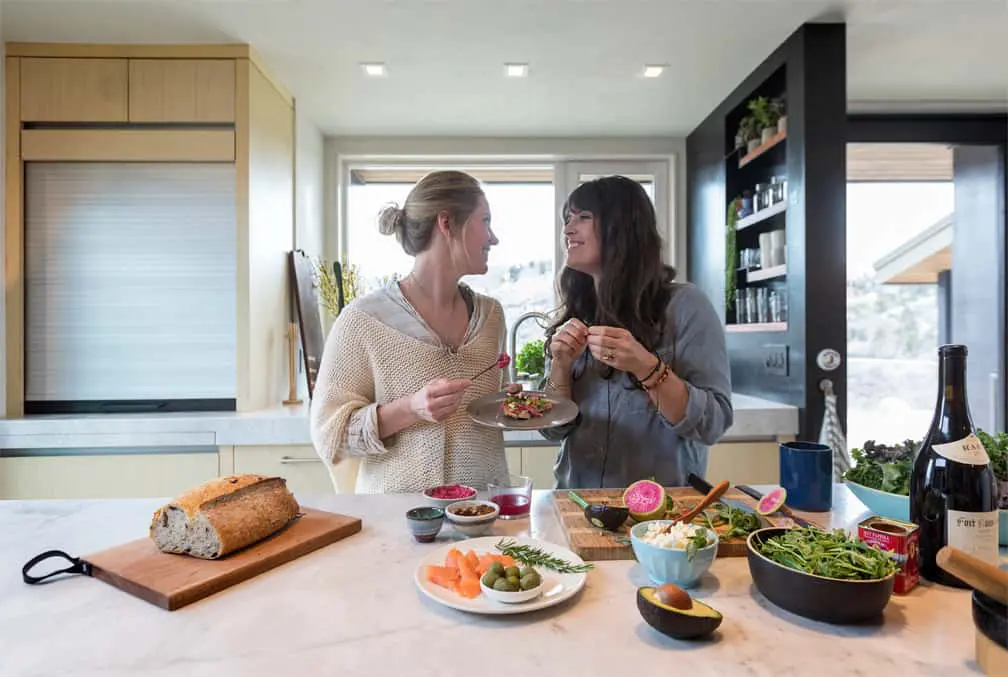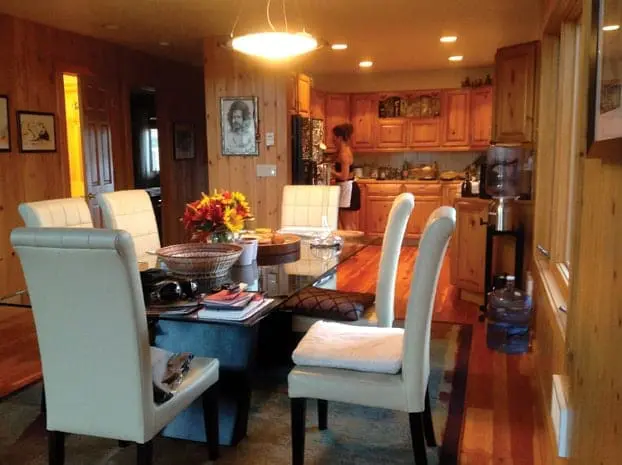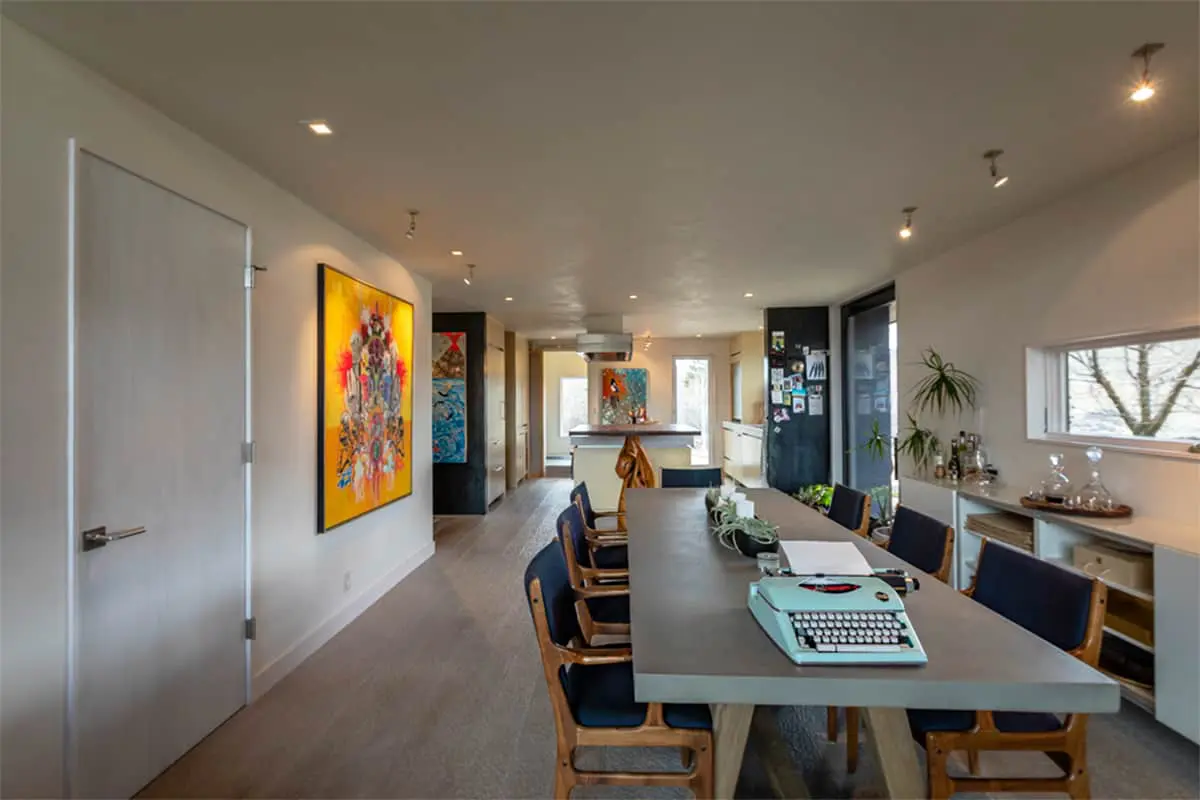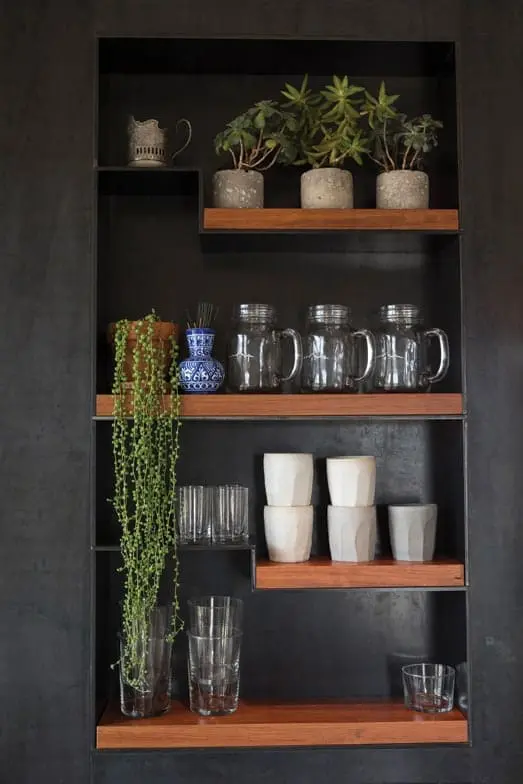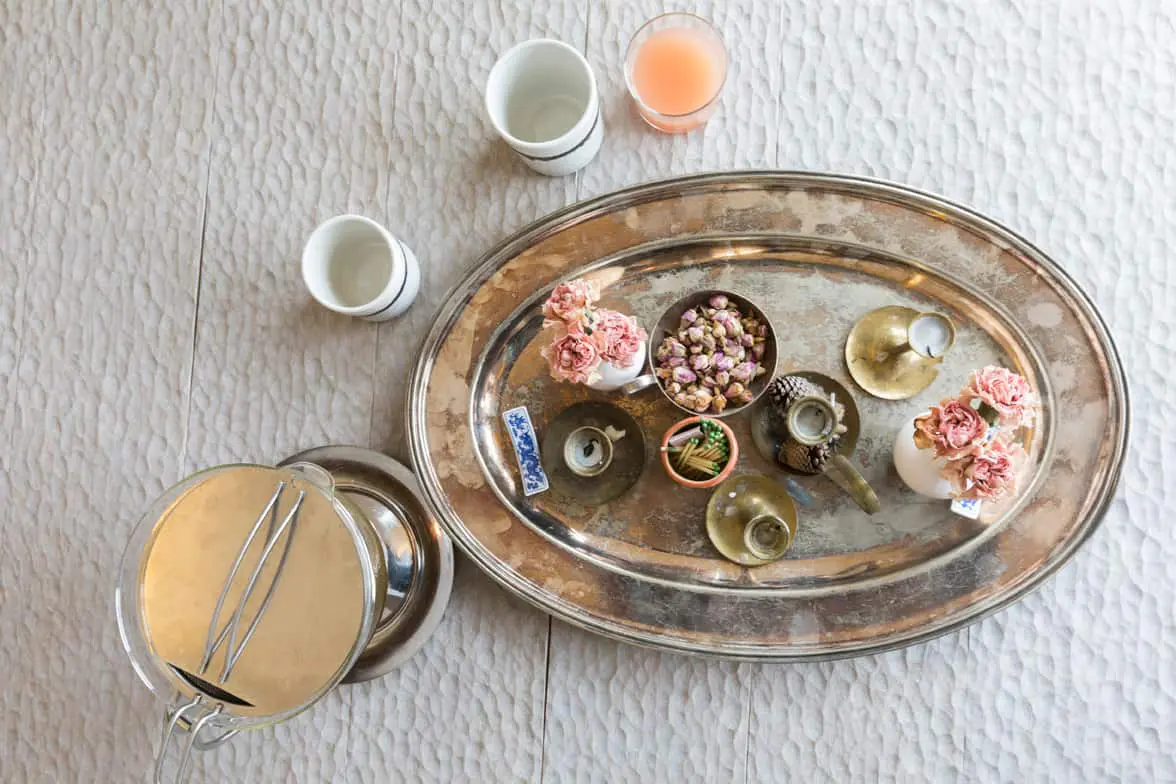By Deb Barracato // Photography by Greg Von Doersten
—
It’s a common dilemma: You want to feed your family healthy food, but at 6:00 on a weeknight, with no meal plan and no groceries at home, the lure of convenience becomes hard to resist. It’s just easier to stop for takeout or to resort to a microwave meal. You assuage your guilt with asserted intentions to do some menu planning and food prep over the coming weekend.
Jackson architect Veronica Schreibeis Smith knows the feeling well. As a busy professional and mother, she chased the desire to eat clean for several years, searching for simple ways to incorporate more wholesome nutrition into her lifestyle—to make it a habit. She’s now leading a global trend toward “wellness kitchens,” spaces designed to make it easy to optimally store and prepare fresh, nourishing foods. Schreibeis Smith believes that healthy mealtime rituals feed the mind and soul as well as the body.
The New Modern
As CEO of Vera Iconica Architecture and chair of the Global Wellness Institute’s Wellness Architecture Initiative, Schreibeis Smith understands the effects of the built environment on wellbeing. But “modern” kitchens, which essentially date back to the post-World War II era (albeit with some cosmetic upgrades), do little to support a healthy lifestyle.
She envisions a different approach with her Vera Iconica Kitchen. She focuses on creating a space that feels like a sanctuary at the beginning or end of a busy day, so cooking becomes an act of rejuvenation rather than a chore. In a Vera Iconica Kitchen, uncluttered surfaces provide plenty of space for shared effort, and comfortable seating invites non-cooks to gather, turning the kitchen into the home’s social center as well.
Though many elements are still in the conceptual stage, the comprehensive design replaces the dark pantry that encourages long-term storage of preservative-laden packaged foods with task-oriented, glass-fronted cabinets to inspire consumption of fresh foods. Instead of depending on a refrigerator to store perishable fruits and vegetables, where the cold, dark conditions rapidly degrade their quality, Vera Iconica Kitchen cabinets include temperature- and humidity-controlled zones to hold living or dormant foods at the peak of nutrition. Her rendering of a kitchen that functions for a modern lifestyle even includes a small greenhouse or growing zone, with a composting appliance inspired by a conventional trash compactor.
Schreibeis Smith’s kitchen is, notably, without a microwave, an appliance she feels promotes consumption of processed convenience foods and degrades the nutritional value of fresh foods with radiation. She also intentionally eliminates closed upper cabinets to add a psychological lightness to the space—a perception that mimics the feel you get from fresh foods, she explains.
It Starts with Intention
As many big ideas do, Schreibeis Smith’s concept of the Vera Iconica Kitchen started with one fairly straightforward desire: She wanted to eliminate harmful food additives and preservatives from her diet. She grew up in a typical suburban house with a standard American kitchen. Her mother grocery-shopped for the family of six just once or twice a month. Canned and frozen foods, along with heavily processed pantry staples, made up the bulk of their meals. As she got older, Schreibeis Smith realized she wanted to take a different approach to her diet. She wanted to fill her plate with nutritious, living foods in as close to their natural state as possible.
She started by pulling everything from her pantry and cupboards and reading all of the labels. Then she set about replacing everything that had an ingredient she did not recognize or could not pronounce with a better alternative. “There are better options for just about everything,” she says, “but you have to be informed about your choices.” As an example, she points to almond milk, widely hyped as a healthy food. “If you look at the back label [of some brands], it has thickeners and preservatives and things you don’t want to go into your body.”
Small Steps Toward a Big Shift
You can incorporate the principles behind the Vera Iconica Kitchen design into your existing space, too, without knocking down walls or ripping out cabinetry. Schreibeis Smith encourages you to start with small steps.
In collaboration with her sister, Ariela Schreibeis, who operates a lifestyle consulting business in Jackson called Clean Clarity, Schreibeis Smith helps clients build a healthier, sustainable relationship with food. She understands that while many people don’t have kitchen remodels or new home construction in their immediate plans, wellness architecture, as with human health, succeeds best with a holistic approach. This includes caring for the environment, she notes. If it’s good for your health, it’s probably good for the environment, and vice versa.
Look at retraining your grocery shopping habits first, she recommends. This begins with the simple switch to reusable grocery bags, a small, easily achievable goal that sets the framework for other meaningful changes. Then start to eliminate packaging when you can, which naturally leads to purchasing greater quantities of fresh foods. When you find yourself automatically shopping the perimeter of the grocery store and heading to the checkout stand with a cart primarily full of whole fruits and vegetables, you might consider investing in a Vitamix or other powerful blender.
“You have to shift your mentality before you buy tools, because they’re only a good investment if you’re going to use them,” she says.
At home, display sturdy fruits and vegetables in pretty bowls on the counter to encourage healthy snacking. Purchase living herbs or keep cut ones fresh in a small vase filled with water. Wash and prep a variety of vegetables and store them on the top shelf of the refrigerator in clear glass containers instead of buried in a crisper drawer. Clear your pantry or cupboards of low-quality canned goods, and use the space to store bulk purchases in clear glass jars and anything otherwise cluttering your countertops.
By making small but steady changes, healthy eating becomes more than just a diet approach. It becomes a wellness lifestyle rooted in the daily rhythms of healthy kitchen rituals.

